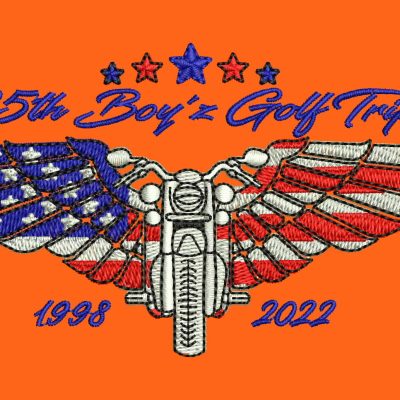High-Quality Digitizing for Embroidery: Specialist Workmanship
High-Quality Digitizing for Embroidery: Specialist Workmanship
Blog Article
Simplifying the Art of Needlework Digitizing: Step-by-Step Guide
As modern technology proceeds to advancement, the digitization process has actually come to be more accessible, permitting enthusiasts to bring their detailed styles to life with ease. In this overview, we will unwind the intricacies of embroidery digitizing, damaging down each step carefully to improve the process and equip both beginners and seasoned embroiderers alike.
Comprehending Needlework Digitizing Software
Embroidery digitizing software application works as a vital device for changing elaborate layouts into digital styles suitable with needlework devices, promoting precise sewing and customization. This specialized software application permits users to import different photo file styles, such as JPG or PNG, and transform them into embroidery machine-readable styles like DST, EXP, or PES - Digitizing for Embroidery. By using attributes like stitch modifying, rug options, and thread color option, digitizing software allows individuals to regulate every facet of the style procedure
Moreover, progressed embroidery digitizing software program provides tools for developing complex layouts, changing stitch density, and incorporating elaborate details. Customers can additionally sneak peek the layout prior to stitching it out, ensuring accuracy and minimizing errors. Additionally, numerous software application give automatic functions that aid simplify the digitizing procedure, conserving effort and time.
Comprehending the abilities of needlework digitizing software program is necessary for attaining high-grade cause needlework jobs. By grasping this tool, embroidery lovers and experts can unleash their imagination and bring elaborate styles to life with precision and efficiency.

Choosing the Right Design File
After familiarizing yourself with the capabilities of needlework digitizing software program, the following crucial action in the process is choosing the best design apply for your project. Digitizing for Embroidery. When picking a layout apply for needlework digitizing, it's vital to consider the complexity of the style, the size of the end product, and the kind of fabric you will certainly be dealing with
For elaborate designs with great details, a high-resolution picture or vector data is advised to guarantee that the needlework maker can precisely duplicate the design. Furthermore, the size of the last product plays a considerable role in picking the appropriate style documents. Bigger designs might need greater resolution data to maintain quality and sharpness.
Additionally, the kind of fabric you will certainly be stitching on influences the selection of design data. Various fabrics might call for modifications in the layout file to make certain that the stitches are effectively lined up and the layout appears as meant. By meticulously picking the right style data based upon these factors, you can set on your own up for an effective needlework digitizing process.
Digitizing Devices and Strategies
Utilizing specialized software application and accuracy strategies, digitizing devices are important in changing elaborate layouts into embroidery-ready data. Needlework digitizing software program, such as Wilcom, Hatch, or Embrilliance, provides the required platform to transform art work right into stitch information. These programs use attributes like stitch editing, underlay options, and lettering tools to make sure the layout converts flawlessly onto material.
Among the crucial strategies in digitizing is developing a clear course for the needlework equipment to adhere to. This entails digitizing each element of the design with precision, identifying stitch types, densities, and directions. By using devices like digitizing tablet computers or software-specific plugins, embroiderers can accomplish a high degree of precision in their digitized styles.
Moreover, grasping the art of underlay stitching is essential for producing top quality needlework. Underlay stitching maintains the textile and produces a foundation for the design, ensuring that the end product is both aesthetically attractive and lasting. By comprehending these digitizing devices and methods, embroiderers can elevate their craft and bring detailed layouts to life with precision and efficiency.
Personalizing Stitch Types and Directions
The Your Domain Name choice of stitch kinds can dramatically affect the total look and structure of the embroidered layout. By strategically combining these stitch types, embroiderers can achieve depth and dimension in their designs.
Furthermore, the direction of stitches plays an essential duty in enhancing the visual charm of the last embroidery. Numerous stitch directions can add structure, highlight details components, and create aesthetic interest. For instance, changing the angle of stitches can mimic activity or all-natural patterns like fur or plumes. By try out various stitch angles and patterns, embroiderers can bring their styles to life with amazing information and details. Understanding the art of personalizing stitch kinds and instructions encourages embroiderers to unleash their creativity and boost the top quality of their job.
Screening and Refining Your Digitized Style
To make sure the accuracy and quality of your digitized design, complete screening and improvement are necessary action in the embroidery digitizing process. As soon as you have actually finished the digitization of your layout, it is vital to check it prior to waging the real needlework. Checking enables you to identify any potential find concerns such as string breaks, stitch density problems, or style distortions that may affect the result.

After screening, it is crucial to refine your digitized design based on the comments from the test sew-out. This may include tweaking sew settings, changing thickness, or making changes to the general layout to attain the wanted result. By iterating through screening and improvement, you can fine-tune your digitized layout to excellence prior to progressing with the real needlework procedure.
Verdict
Finally, understanding the art of embroidery digitizing needs a detailed understanding of the software, choosing the ideal style data, using digitizing devices and methods, personalizing stitch types and instructions, and testing and refining the digitized layout. By complying with these actions, embroiderers can streamline the digitizing process and create top quality embroidered layouts with precision and efficiency.
Report this page